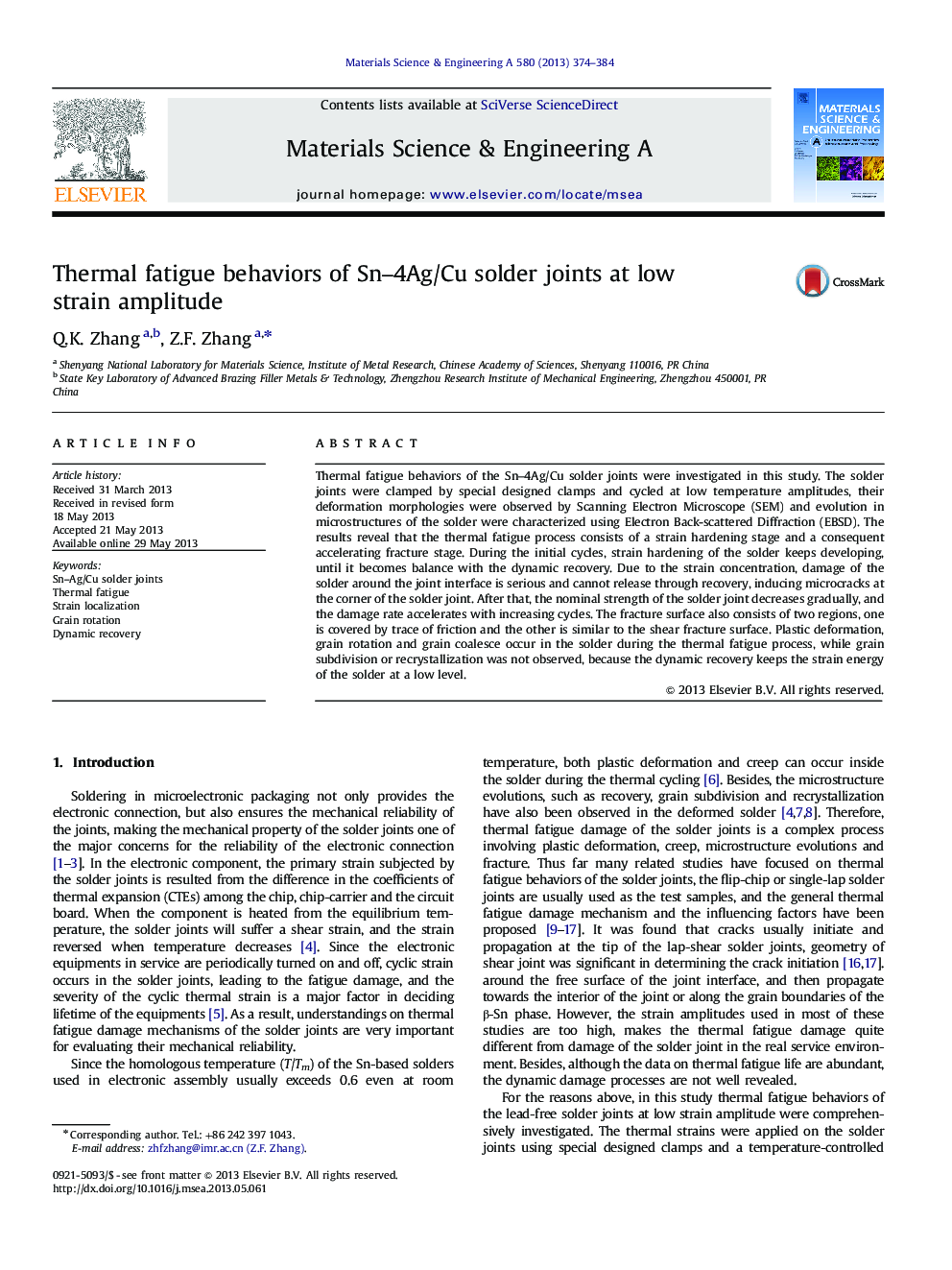| Article ID | Journal | Published Year | Pages | File Type |
|---|---|---|---|---|
| 1575872 | Materials Science and Engineering: A | 2013 | 11 Pages |
Abstract
Thermal fatigue behaviors of the Sn-4Ag/Cu solder joints were investigated in this study. The solder joints were clamped by special designed clamps and cycled at low temperature amplitudes, their deformation morphologies were observed by Scanning Electron Microscope (SEM) and evolution in microstructures of the solder were characterized using Electron Back-scattered Diffraction (EBSD). The results reveal that the thermal fatigue process consists of a strain hardening stage and a consequent accelerating fracture stage. During the initial cycles, strain hardening of the solder keeps developing, until it becomes balance with the dynamic recovery. Due to the strain concentration, damage of the solder around the joint interface is serious and cannot release through recovery, inducing microcracks at the corner of the solder joint. After that, the nominal strength of the solder joint decreases gradually, and the damage rate accelerates with increasing cycles. The fracture surface also consists of two regions, one is covered by trace of friction and the other is similar to the shear fracture surface. Plastic deformation, grain rotation and grain coalesce occur in the solder during the thermal fatigue process, while grain subdivision or recrystallization was not observed, because the dynamic recovery keeps the strain energy of the solder at a low level.
Related Topics
Physical Sciences and Engineering
Materials Science
Materials Science (General)
Authors
Q.K. Zhang, Z.F. Zhang,
